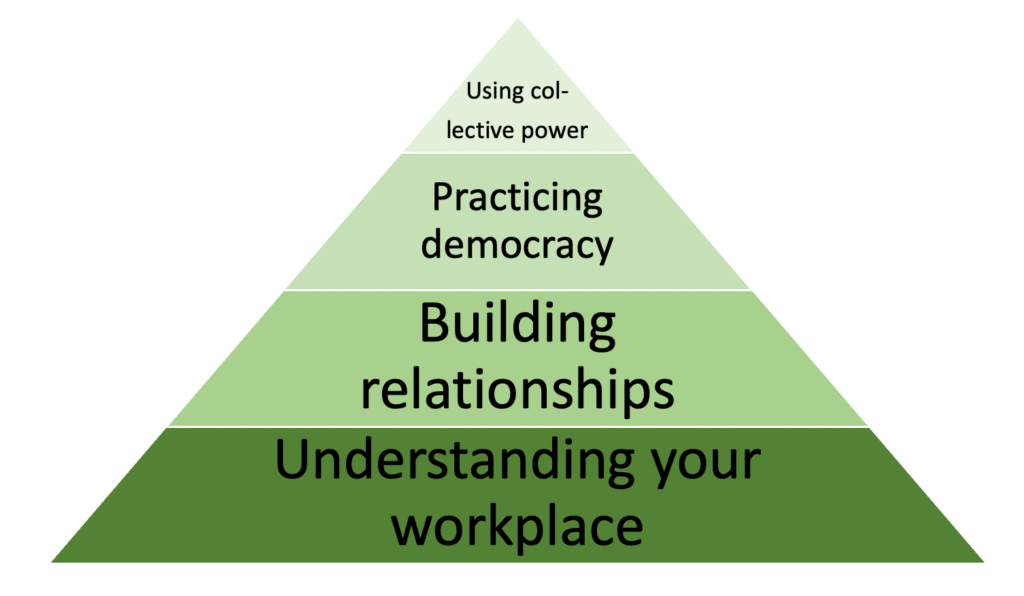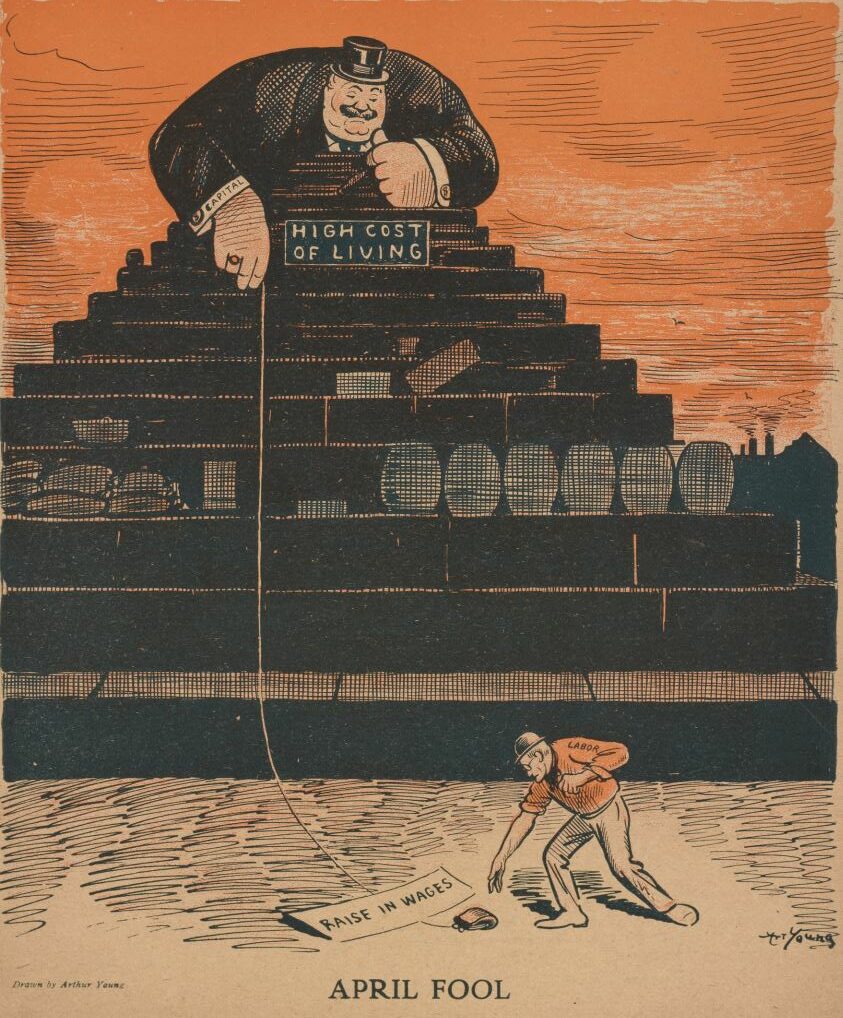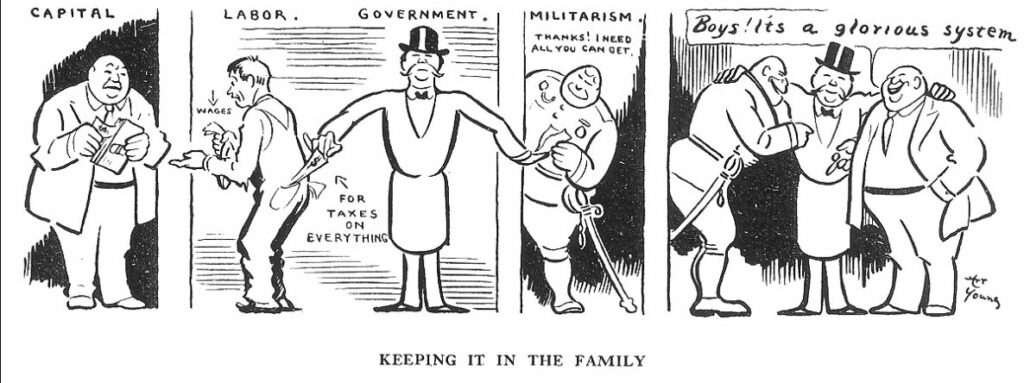
Editor’s note: The following story was published in Seattle Worker on March 8th, 2023. I am sharing this piece in Industrial Worker because it’s an example of the upside-down pyramid and what happens when you take action in the workplace without having a solid organizing foundation.
This summer, a member of the IWW branch in Bellingham, Fellow Worker A., got a job at West Marine, a retail store selling boating equipment. After a few months of casually talking about unionism and the union with their coworkers and receiving positive responses, 3 of the 4 other workers in the shop wanted to meet with an IWW delegate to talk about organizing their workplace and potentially joining. That’s where I came in. FW A. set up a meeting between the West Marine crew and me for the following week, making me what IWW calls an external organizer — an IWW member outside the workplace the workers consult with and learn from.
In this first meeting, I went over some general philosophy and tactics of our union and how we might be able to help them. I asked about the layout and structure of the shop as well as any grievances or possible demands that they would like to focus on first. Everything went pretty well and by the end of the meeting everyone in the room was the proud owner of a red IWW card! This made West Marine the very first retail store to organize with the Whatcom-Skagit IWW branch. We ended the first meeting by delegating tasks for each worker so they could start laying the groundwork for their union, and scheduled a second meeting a month out.
While we were making a plan for laying that groundwork, something came up in the shop the next day — Inventory was going to start. Since everyone was going to be in the shop at the same time this appeared to be a sudden, unexpected opportunity to inform the boss of the new union in the store. An emergency meeting of the West Marine union was called and they voted to march on the boss and give her the news. Not 48 hours after the 3 other workers had joined the IWW, the boss was informed. Not surprisingly, the boss did not immediately recognize the union. (See the article in the Nov-Dec Seattle Worker.)

All of this seemed too good to be true. I would soon learn why it was. This was a “hot shop.” A hot shop is a workplace that, while being pro union, does not have the proper groundwork laid, follow through, or know-how for a truly successful organizing campaign.* Hot shops often revolve around a single issue, or one or two go-getters in the workplace.
But today there is no union presence at West Marine. That’s not due to union busting, but rather a culmination of mistakes made along the way, as well as the lack of a foundation and motivation getting lost soon after the formation of this union.
The young workers in the shop didn’t fully understand that making a union takes group effort and commitment. Within a month or so, after not hearing much about organizing progress , two of the workers informed us that they had quit for better opportunities. While understandable, that made the remaining two new Fellow Workers unequipped and uninterested in maintaining the union that was now cut in half. FW A. is the only worker that still maintains IWW membership and they no longer work at West Marine. In a hot shop a lot of motivation in the workers typically dies quickly. But I want to stress that this is not entirely these Fellow Workers’ fault. I also take responsibility for the failure of this effort. I learned a lot from this experience. It was my first time as an external organizer.
I should have had the foresight to see the cracks that were developing in this union effort. First, I got swept up in the excitement right along with them and made some impulsive decisions that I now know should have been made differently. Second, I learned the importance of a strong foundation. While it’s true that 80 percent of the employees at the store held IWW union cards, only one of them had been a part of the union for more than a few days before they marched on the boss. This is not enough time for beginning their very first experience with a union, or to fully understand the effort required to organize their workplace and gain a realistic perspective of what that looks like. They never had the chance to be in a meeting with our branch, take our Organizer Training 101 workshop, or even really meet any of the other Wobblies in town. It all happened so fast, the rest of the branch didn’t have a chance to get involved at all.

This entire campaign was built on impulsivity. Sure, there was an innate desire for change. They were all so hyped up from getting their first union card! Groundwork be damned! We want our union now! It’s easy to understand this feeling, but this honeymoon period in organizing is not the best time to make big decisions regarding your organizing. I should have nudged them away from impulsivity and stressed the importance of having a solid framework for the rest of their efforts to build on. The third lesson I learned was I didn’t make sure that everyone involved was on the same page as far as what they want from their workplace. Like many jobs, this was not a job that a lot of the workers felt all that strongly about keeping. While their efforts, if carried through, could have helped new hires have a more dignified workplace, after one of them left I was never quite sure that any of them really wanted to stay — either in the shop or in the union. During a campaign it is vital that morale is high enough to keep the workers, especially the union members, on the job. A union won’t do any good if no one works there. Now none of this is to say that if you are working on a campaign and people are new, or seem excited to get things done, or might be thinking of quitting, that you should avoid the attempt to help them organize. Just take as much time as you can when it comes to organizing. Look for warning signs. Avoid that impulsivity. Make sure that groundwork is in place. If someone is thinking of quitting, see if they are willing to stay and see things through. And if they’re not, know that it’s very likely that morale will take a hit.
But above all: beware the hot shop!
Ed. Note: *A hot shop is an extremely agitated workplace prone to taking impulsive collective action rather than starting with the shopfloor organizing fundamentals – committee, contact list, and inoculation against union-busting.
Contact the IWW today if you want to start organizing at your job.
If you are a member in good standing and wish to take the Organizer Training 101, please email the OTC. If you would like to request a group OT101 with your GMB, job branch, or coworkers, fill out this form.
